Portfolio: Photographs
No country is better known for its manmade monuments than Egypt with its grand pyramids and its extraordinary temples. But there are also many beautiful, little-known natural areas in the country. My passion for photography and discovery led me to explore and photograph remote, unique landscapes. Some of these photographs were recently exhibited as part of a group photography exhibition mounted with about sixty other Cairo-based photographers like myself; we call ourselves The Travelers.
The photos I chose for this portfolio are of Lake Burullus in the northern tip of the Nile Delta in Kafr El-Sheikh Governorate, separated by a narrow strip of land from the Mediterranean Sea in the north. Its location, and the mingling of salt and fresh water, make it a unique ecosystem for fish and fowl. Lake Burullus is a protected area stretching over 460 square kilometers and is located toward the east of the Rosetta branch of the river Nile. It is the second-largest natural lake in Egypt.
The lake is shallow and has a number of environmental features, including salt swamps and sand plains. The lake is rather elongated and there are approximately fifty islands scattered over it and it has one connection with the sea. The salt concentration is high near the north and decreases toward the south. Salt is produced at the southern part of the lake where commercial fish farming is done as well.
The southern shore is bordered by reed swamps and a large variety of aquatic vegetation is underwater. The lake is a home to over 135 species of plants both of the land and of the aquatic variety. The lake is an important wetland for the waterfowl that are seen here during the winter season. The protectorate is a place to have a great bird watching experience as many migrating wild birds can be seen here in the water. The surrounding marshes make it an ideal location to spot shovelers, boots, whiskered terns, and pochards during the winter. One can also see wigeon, Anas penelope, ferruginous duck, and Aythya nyroca here.
Ninety-seven percent of the water in the lake is the result of agricultural drainage, while the remaining water comes from rainwater and groundwater.
Lake Burullus is home to about 33 species of fish, 23 species of reptiles, 112 species of birds, and 18 species of mammals. Initially, when the lake was made, there were over 52 species of fish, however their number has declined due to the decrease in salt concentration caused by the inflow of agricultural water into the lake.
The pictures I took there were mostly of the sunrise and the sunset on the lake, using a DSLR camera. I also went to a place called Shakhlouba, which is fisherman’s town, at dawn. I took out a small boat and circled two small islands not far from the shore. I was very lucky that morning because the sky was full of clouds, which added to the beauty of the sunrise. What was also noticeable was that after the sun rose completely these clouds were reflected in the lake creating dreamlike pictures. Some of these reflections were nearly a mirror image of the sky, which added to the beauty of scenery on the shimmering water.
The White Desert is another extraordinary and remote landscape accessible only by four-wheel drive trucks. I spent a night there with a group of four accompanied by a guide, who was essential since many areas in the desert are not open to the public. Three of my photos from the White Desert are included in the portfolio.


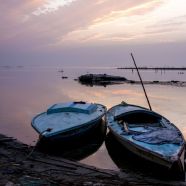





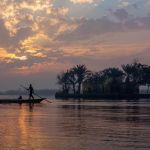
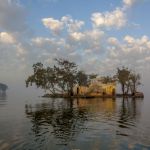
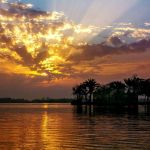
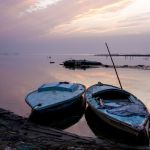
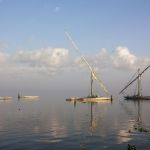
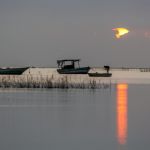

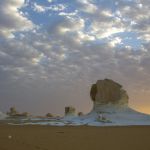
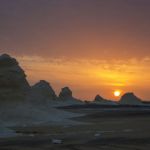
Very beautiful photos showing the amazing scope of beauty to be found in Egypt
Great photos of the hidden gems of Egypt! Thank you Nahed for sharing your photos and article and thank you Samia for publishing!
Amazing & Lovely Photos for Egypt,s landscape.. Great work Nahed..
Amazing nature photography with sensitive reflection of light and spectacular colors . Bravo Nahed Rouchdy. Cheers!
Gr8 JOB
Alf Mabrouk ya Nahouda
Xoxo lots of LOVE
Magical, Nahed. Bravo
Great article, beautiful photos.
Spectacular photos and very interesting article. Bravo 👏👏👏
Amazing pictures of unknown nature in Egypt
Bravo Nahed it is fascinating
These photographs are so beautiful and serene! And the article is really interesting. Looking forward to more!